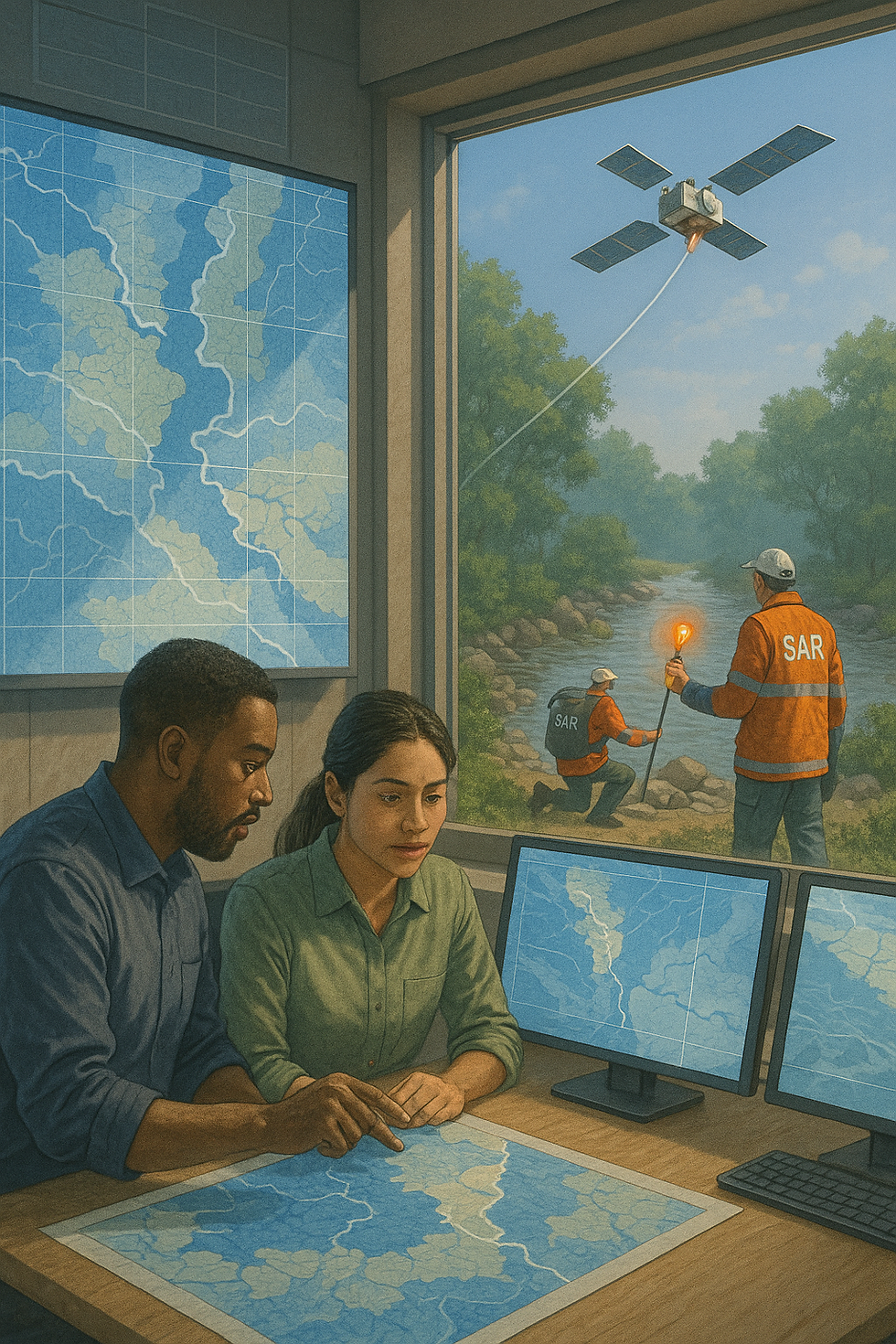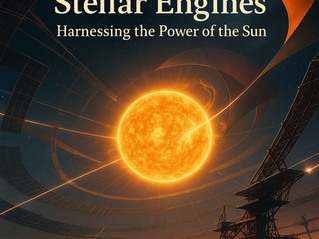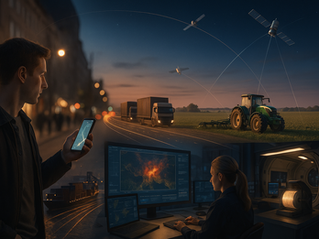Exploring the Transformative Power of Space Technology
- Mr_Solid.Liquid.Gas
- Oct 26
- 3 min read
Space technologies now underpin critical public services—from disaster early warning to broadband in rural communities.
This article maps the benefits while laying out ethics, privacy, and sustainability practices that keep the orbital commons healthy.

KEY TAKEAWAYS
· Earth‑observation data and GNSS timing strengthen emergency response, water management, and national resilience.
· Satellite broadband and 5G NTN can narrow the digital divide when paired with affordability and community Wi‑Fi models.
· Responsible use demands privacy‑by‑design, transparent data policies, and meaningful opt‑out pathways.
· Debris mitigation, traffic coordination, and open standards are prerequisites for a sustainable orbital commons.
Introduction
Space technology has shifted from niche to necessity. Weather, agriculture, logistics, finance, and emergency services rely on satellites for data, positioning, and connectivity. Harnessing these capabilities at scale requires not only investment but also clear guardrails for privacy and sustainability.
Public Services Supercharged by Space

Earth‑observation (EO) satellites, GNSS timing, and satellite communications have matured into reliable public‑service tools. Four high‑impact uses illustrate the breadth of value.
• Early‑warning systems — EO plus river‑gauge assimilation improve flood forecasting; GNSS timing stabilises alert networks.
• Flood mapping — Radar satellites penetrate cloud cover to classify inundation, guiding evacuations and insurance triage.
• Search‑and‑rescue (SAR) — Beacons that ping satellites accelerate time‑to‑rescue on seas, trails, and remote roads.
• Wildfire response — Thermal and multispectral sensors track ignition, rate‑of‑spread, and smoke plumes for air‑quality alerts.

ADOPTION CHECKLIST FOR MUNICIPALITIES
· Define outcomes: evacuation time saved, hectares protected, broadband coverage added.
· Data pipeline: choose open EO sources first; add commercial layers where ROI is clear.
· Procurement: require open standards (OGC, STAC), APIs, and service‑level objectives.
· Interoperability: mandate common map projections, metadata, and role‑based access.
· Training & continuity: certify staff on tools; budget for maintenance and updates.
Equity & Access: Bridging the Digital Divide

Non‑terrestrial networks (NTN) and modern GEO/LEO constellations extend coverage to rural and remote communities.
Connectivity is only transformative, however, when affordability and local capacity accompany the hardware.

• Last‑mile models — Community Wi‑Fi fed by satellite backhaul; school/clinic anchors with shared bandwidth plans.
• Affordability levers — Social tariffs, device‑loan libraries, and subsidised installation for underserved households.
• Education outcomes — Always‑on access supports homework completion, parental engagement, and digital‑skills curricula.
• Resilience — NTN links serve as failover during fibre cuts and disasters, keeping public services online.
Ethics, Privacy & Transparency in the Space Age

High‑resolution imagery and persistent monitoring deliver societal value but raise legitimate concerns.
Trustworthy programmes adopt privacy‑by‑design and communicate clearly how data is collected, processed, shared, and retained.

• Proportionality — Use the least intrusive data that meets the public‑interest goal; prefer lower resolution when adequate.
• Aggregation & minimisation — Publish community‑scale insights rather than identifiable imagery when possible.
• Transparency tools — Public data catalogues, change logs, and model cards describing algorithms and limitations.
• Meaningful choices — Opt‑out pathways where feasible (e.g., blur requests for private sites), and independent oversight boards.
• Security & governance — Encryption in transit/at rest, strict retention windows, and third‑party audits.
A Vision for a Sustainable Orbital Commons

The same satellites that benefit society must coexist safely in crowded orbits. Sustainability practices reduce risk and preserve access.
• Debris mitigation — Design for passivation, reliable deorbit within prescribed timelines, and collision‑resistant modes.
• Space traffic management — Share ephemerides; standardise conjunction messaging and manoeuvre protocols.
• Open standards — Interoperable servicing interfaces, refuelling couplers, and data schemas to avoid vendor lock‑in.
• Climate‑aligned operations — Power‑efficient hardware, responsible ground segment energy, and lifecycle assessments.
Conclusion

Space technology is already a public good.
The next step is disciplined delivery: target measurable outcomes, budget for training, publish transparent policies, and embed sustainability from design to disposal.
Done right, orbital infrastructure becomes an engine for equity, resilience, and innovation.












































































































Comments